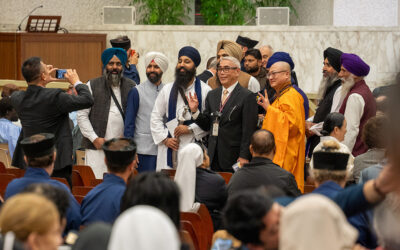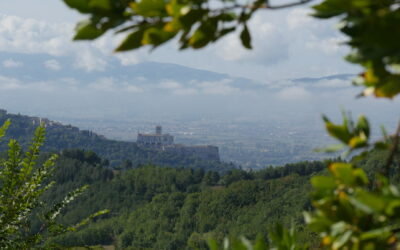
“We’re in need of everything, because the city of Tacloban practically no longer exists.” This news arrived directly from the Focolare community in the Philippines during the dramatic hours following the passage of typhoon Haiyan and the destruction it caused on November 9, 2013 especially on the islands of Leyte and Samar. It was one of the worse typhoons in history: communication and electrical power were down in many regions and with the passage of time the death toll continues to rise.
Tacloban is the was the worst-hit city. It is the capital of Leyte Province, an island in the central southeast. 10,000 of its 200,000 inhabitants are thought to be dead, and the number continues to grow. As in many of the islands, there is a Focolare community also in this city. Many of the inhabited regions are unreachable: “We’re trying to make contact from the other islands and take supplies, but communication is still quite difficult.,” write Carlo Gentile and Ding Dalisay from Cebu. “One focolarino doctor, Himmel, along with Rey and Ladyliz attempted to rech Tacloban through the port of Ormoc, on the island of Leyte, but that city was completely destroyed and the roads were unusable.”
On the evening of November 10, 2013, some young people (Gen) from Tacloban, who were in Cebu at the moment of the typhoon, went with a coast guard boat to see how their families were, and check out the local situation.” “Also other relatives of persons with whom we are in contact on the island of Panay, in the path of typhoon, had their homes destroyed or greatly damaged.”

The central region of the Philippines, with the large group of Visayas islands was most at risk both because of the frequency of tropical storms and the construction of dwellings. The devastating typhoon hit the poorest islands of this region, the ones that are most difficult to reach. Aware of the risk, the government evacuated over 600,000 people and collaborated in the construction of refuges. Archbishop of Cebu, Jose Palma, invited everyone to pray, to ask for God’s help. Thanks to all this it seems that human damage was minimal compared to other times, even though the number of deaths is going to rise.”
Assistance arrived from around the world, thanks also to the prayer offered by Pope Francis at the Sunday Angelus. “In Cebu we are already receiving help from all over the Philippines and also from overseas (Hong Kong, Jordan).”
WHERE TO SEND YOUR DONATIONS
FOCOLARE MOVEMENT IN CEBU – see also Emergency Aid poster
Payable to : Emergency Typhoon Haiyan Philippines
METROPOLITAN BANK & TRUST COMPANY
Cebu – Guadalupe Branch
6000 Cebu City – Cebu, Philippines
Tel: 0063-32-2533728
Bank Account name: WORK OF MARY/FOCOLARE MOVEMENT FOR WOMEN
Euro Bank Account no.: 398-2-39860031-7
SWIFT Code: MBTCPHMM
Payable to: “Help Philippines– Typhoon Haiyan“
Email: focolaremovementcebf@gmail.com
Tel. 0063 (032) 345 1563 – 2537883 – 2536407
Association for a United World (Associazione Azione per un Mondo Unito – Onlus)
BANK: Banca Popolare Etica, Rome branch
IBAN: IT16G0501803200000000120434
SWIFT/BIC CCRTIT2184D
Payable to: “Emergenza tifone Haiyan Filippine”
New Families Movement (AZIONE per FAMIGLIE NUOVE Onlus)
c/c bancario n° 1000/1060
BANCA PROSSIMA
IBAN: IT 55 K 03359 01600 100000001060
Swift: BCITITMX




0 Comments